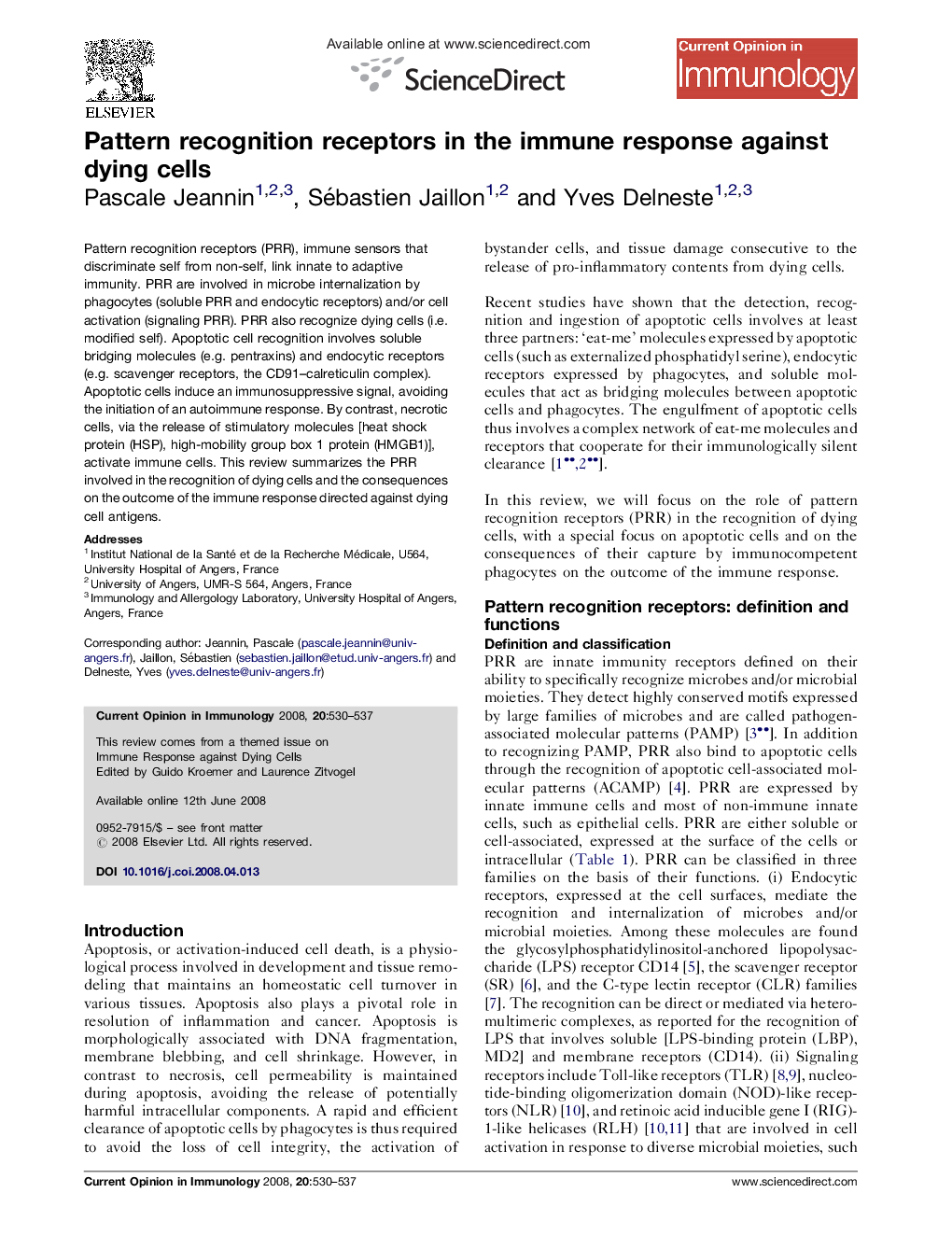| Article ID | Journal | Published Year | Pages | File Type |
|---|---|---|---|---|
| 3346370 | Current Opinion in Immunology | 2008 | 8 Pages |
Pattern recognition receptors (PRR), immune sensors that discriminate self from non-self, link innate to adaptive immunity. PRR are involved in microbe internalization by phagocytes (soluble PRR and endocytic receptors) and/or cell activation (signaling PRR). PRR also recognize dying cells (i.e. modified self). Apoptotic cell recognition involves soluble bridging molecules (e.g. pentraxins) and endocytic receptors (e.g. scavenger receptors, the CD91–calreticulin complex). Apoptotic cells induce an immunosuppressive signal, avoiding the initiation of an autoimmune response. By contrast, necrotic cells, via the release of stimulatory molecules [heat shock protein (HSP), high-mobility group box 1 protein (HMGB1)], activate immune cells. This review summarizes the PRR involved in the recognition of dying cells and the consequences on the outcome of the immune response directed against dying cell antigens.
